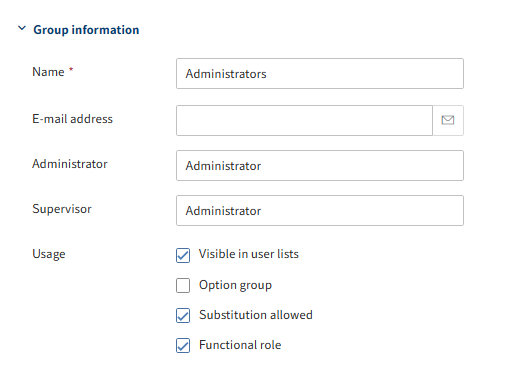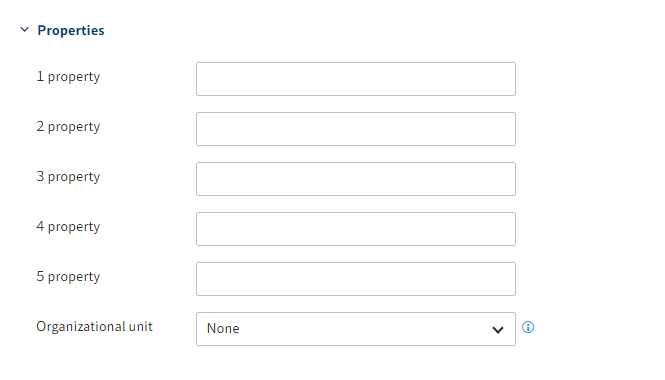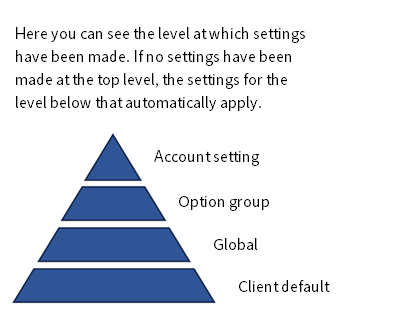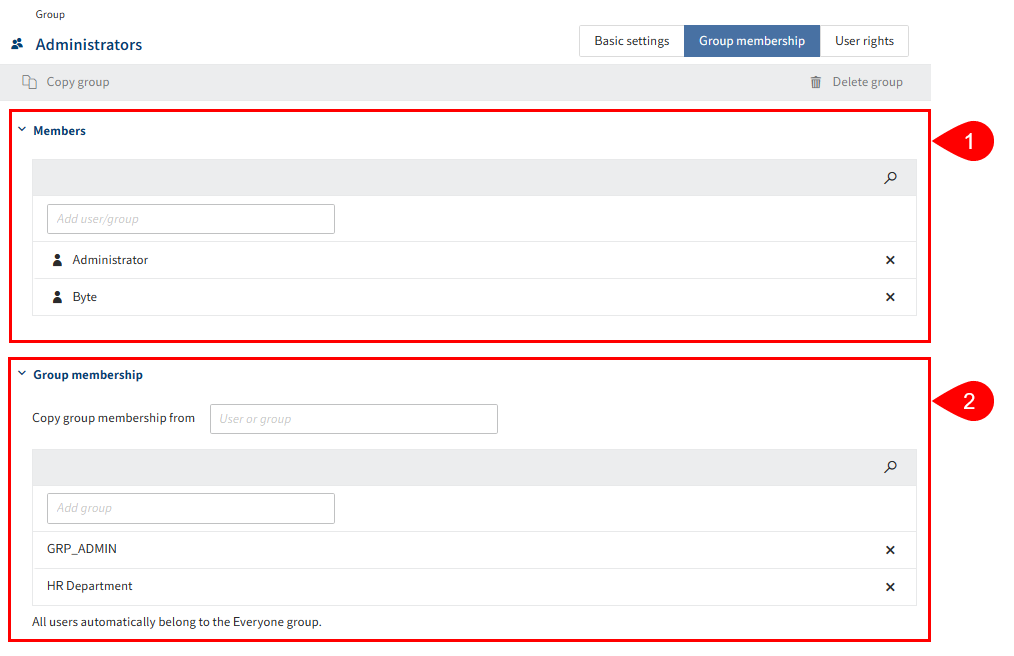# Configuration
# Define basic settings
In the Basic settings area, you define the Group information, Properties, and additional Information.
# Group information

Name: Mandatory field. This can be changed later.
E-mail address: Displayed in the user profile in the client and can be used in workflows, forms, and scripts.
Administrator: The name of the account used to create the new group is automatically entered. If this user has the Main administrator right, the Administrator user is entered in the Administrator field. This can be changed later. Determines who may edit the master data of the group.
Supervisor: Can be used in workflows, forms, and scripts. If this field is left blank, the content of the Name field is used.
Usage:
Visible in user lists: If this option is enabled, the group will show up in the corresponding selection lists in the ELO client. If the option is disabled, the group still exists in ELO, but it is not shown in the corresponding selection lists in the ELO client.
Option group: Option groups are defined for the purpose of assigning specific ProfileOpts. Only these groups show up in dialog boxes where settings are made for other ELO accounts.
For more information on option groups, refer to Option groups.
Substitution allowed: You can control how rights are distributed via the substitution module. For groups that have the substitution right, rights can be transferred to substitutes.
Functional role: If this option is enabled, members of this group are asked during logon whether they want to assume the functional role for the current session.
This option makes sense if a user has to perform different tasks in ELO that require different permissions and rights.
# Properties

- Property 1-5: Information can be evaluated using scripts.
- Organizational unit: You will find relevant information under Configuration and administration > User administration > Additional configurations > Organizational units.
# Information

- Description: The entry can have a maximum of 250 characters.
- Last changed on: Is updated automatically.
- ID: Each group is automatically assigned an ID, which can be used to address the group in other functions.
- GUID: Each group is automatically assigned a GUID. The GUID can be used to address the group in other functions.
# Option groups
User-specific options are generally assigned to a user. However, group options are applied if there are no user-specific options. If these have not been defined, then the settings for the Everyone group are applied. If settings have not been defined for this group, there is also an ELO default value (company default setting or client default).

These groups allow you to control who has access to specific functions.
You can define which users can execute ELO functions from the context menu, or only from the ribbon buttons, or both at once, and can even block access to parts of the software. It is also possible to control scripts and script functions as well as icons for each option group.
This is practical for ELO workstations with special areas of responsibility, in order to improve usability and to prevent incorrect usage.
Please note
An ELO user should only be a member of one option group. Memberships in multiple option groups can result in conflicting settings.
# Define group membership

1 Members: Add existing users or groups as members
2 Group membership: Inherit existing group memberships from other groups or users or manually add existing groups
Information
Groups can be incorporated into other groups. This allows you to implement complex combinations of rights settings and permissions concepts.
Information
If you type a space in an input field, the entire list of available users and groups will be displayed.
# Assign user rights

There are three options for assigning user rights:
Inheritance
You will find more information under Configuration and administration > User administration > Rights in ELO > Inheriting rights.
Manual assignment
You will find more information under Configuration and administration > User administration > Rights in ELO > User rights.
Inheriting from another group or user
Information
Ideally, all rights are inherited through groups. This makes it easier to assign and manage rights.